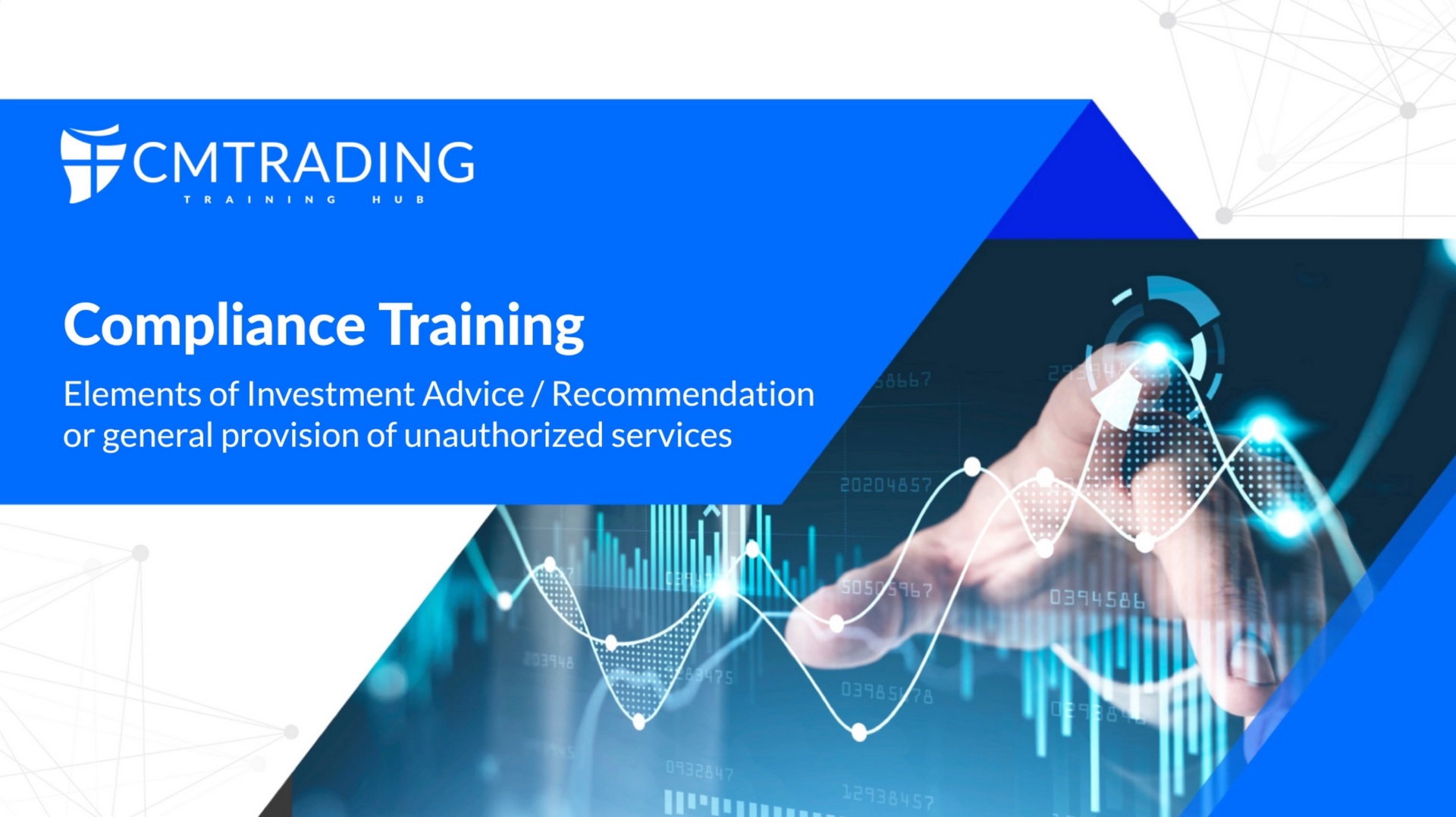Compliance

Overview
In today’s financial environment, maintaining transparency, integrity, and ethical communication with clients is not just a best practice — it is a regulatory requirement.
This training is designed to help you understand the key elements of compliance, recognize unacceptable behaviors, and apply company guidelines in every client interaction.
Being Rude or Unprofessional.

This type of wrongdoing occurs when an Account Manager (AM) engages in rude, disrespectful, or inflammatory behavior. It also includes situations where the AM communicates with clients in an unprofessional or unethical manner.
Not referencing market sources.

This situation occurs when an Account Manager (AM) shares market news, financial information, or expectations without clearly referencing the third-party source from which the information was taken.
Overvaluing the results of signals or alerts prepared by third parties.

This situation occurs when an Account Manager (AM) promotes or emphasizes third-party trading signals without acknowledging the associated risks, or without clarifying that these tools should not be followed blindly.
Placing the AM personal interests above those of the Company or the Client.

This situation arises when an AM acts in a way that serves their own benefit, instead of upholding the best interests of the client or aligning with the company’s principles and guidelines.
Not providing the correct options in situations of low margin, margin call, or providing inaccurate information regarding the use of stop-loss orders.

This situation arises when an Account Manager (AM) fails to clearly explain all available options to the client during scenarios involving low margin or a margin call, or when incorrect guidance is given regarding stop-loss strategies.
Misleading information, absolute statements, and unbalanced messages without reference to risk.

This situation arises when an Account Manager (AM) discusses only the positive aspects of a product, a trading tool, or a financial opportunity, without mentioning the associated risks, or presenting them in a balanced, complete way.
Providing investment advice or unauthorized recommendations.

This situation occurs when an Account Manager (AM) gives a personal recommendation to a client, either because the client asked for it, or because the AM took the initiative to comment on buying, selling, or holding one or more CFDs.
Making promises to clients, or presenting profit forecasts without including appropriate risk statements.

These are statements that guarantee a profit or assure an outcome, without acknowledging any risk or uncertainty. Statements that seem cautious, but still lack a proper risk disclaimer.
Pressuring a client to cancel or avoid making a withdrawal request.

This occurs when an Account Manager (AM) tries to convince the client not to proceed with a withdrawal, or directly asks them to cancel a withdrawal that has already been submitted.
Aggressive sales tactics and the use of pressure.

This occurs when an Account Manager — or AM — uses commercial practices that impair the client’s freedom of choice by pushing them emotionally, psychologically, or through urgency, to take actions they may not otherwise take.
Money Laundry

In this session, we’ll explore one of the most important responsibilities we carry as professionals in the financial industry — preventing money laundering and terrorist financing.
AMLCFT
Advice

In this session, we’ll explore what financial advice really means, how it is defined in law, and what the consequences are if it’s given without proper authorisation.
This training is essential for all client-facing roles, especially those in Sales and Retention.
Advice
